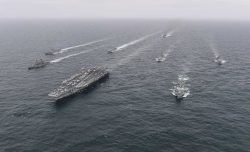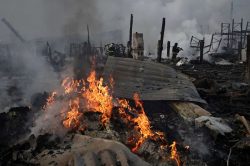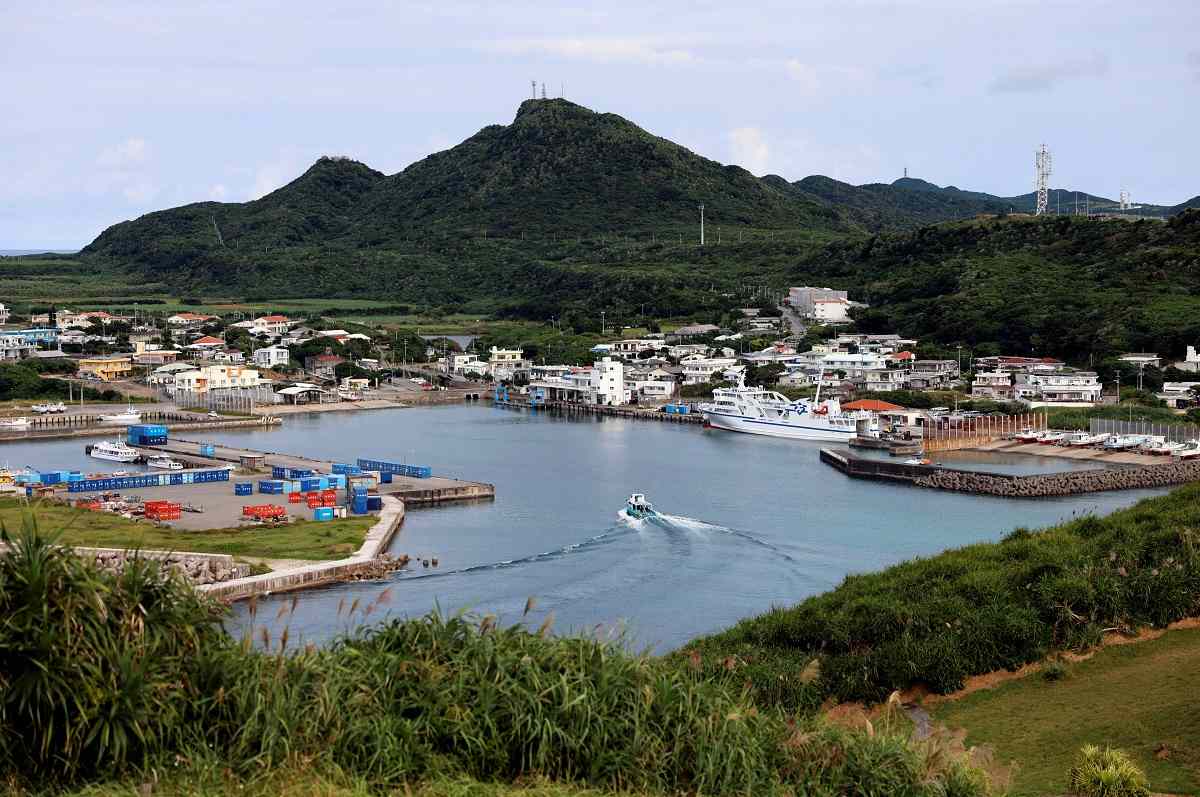
A general view shows Kubura fishing port on Yonaguni island, Japan’s westernmost inhabited island in Okinawa prefecture, Japan November 10, 2023.
11:57 JST, December 5, 2023
YONAGUNI, Japan (Reuters) – Sonkichi Sakihara recalls chancing upon some of the last refugees to arrive on Yonaguni: four men who had sailed more than 2,000 kilometers from Vietnam to reach Japan’s westernmost inhabited island. It was 1977.
“I was out checking for stowaways from Taiwan when I found them,” Sakihara, 80, said at his family store near the port where he encountered the group, among 113 Vietnamese to make the journey after the war ended.
Today, some residents of Yonaguni foresee another refugee crisis that they say their isolated outpost and its dwindling population of less than 1,700 would be ill-equipped to handle. Just 110 kilometers to the west, and occasionally visible from Yonaguni, is Taiwan, the self-ruled island of 24 million that China asserts is its territory and which Beijing is menacing with simulated missile strikes and other displays of military firepower.
Concerned about the potential for conflict, Japan has embarked on its biggest defense build-up since World War Two. But the $290 billion outlay comes without a parallel plan to prepare Yonaguni for a possible humanitarian crisis that residents like Sakihara say could quickly overwhelm their shores.
In interviews with Reuters, more than two dozen current and former Japanese officials and residents said hundreds, if not thousands of refugees could try to reach Yonaguni in boats if China attacked Taiwan. Tokyo, they said, has no plan to deal with them, and locals’ pleas for help have gone unanswered.
“It’s like their mouths are taped shut,” said Yonaguni mayor Kenichi Itokazu, referring to the central government. Pinned to a noticeboard at his town hall was a list of typhoons and other crises to have visited the island, including the arrival of the Vietnamese.
Itokazu said he had appealed for help directly to Japan’s Chief Cabinet Secretary Hirokazu Matsuno when he came to Yonaguni in July, but again got no response.
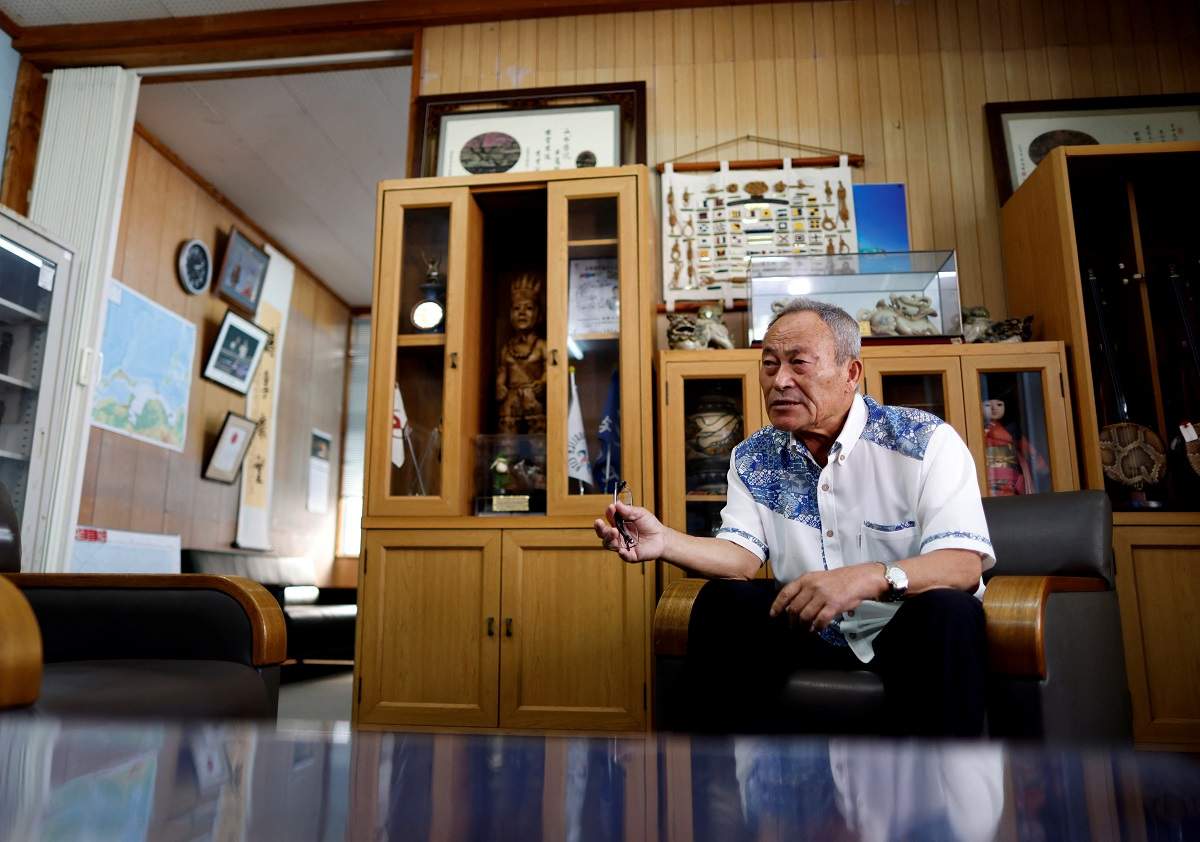
Yonaguni town mayor Kenichi Itokazu speaks during an interview with Reuters at Yonaguni town hall, on Yonaguni island, Japan’s westernmost inhabited island in Okinawa prefecture, Japan November 9, 2023.
Some U.S. officials say China may be ready to invade Taiwan by 2027. Chinese leader Xi Jinping told U.S. President Joe Biden last month that no such plan exists, but he is raising pressure on Taiwan ahead of a Jan. 13 presidential election that Vice President Lai Ching-te, who Beijing views as a separatist, is tipped to win.
Taiwan’s foreign ministry declined to address questions about whether it had discussed humanitarian contingencies with Japan, but said Taipei would not act rashly or succumb to Chinese coercion.
A spokesperson for Japan’s Cabinet Secretariat said that “if large numbers of refugees came to Japan, relevant government departments would work together to respond.”
He declined to comment on whether there was a specific plan for Yonaguni and said he did not know whether the island’s mayor had directly asked Matsuno for help.
CRISIS SCENARIO
The people who spoke to Reuters included nine current and six former officials with knowledge of Japan’s emergency planning, some of whom spoke on the condition of anonymity because they were not authorized to comment publicly.
They said that while Taiwanese refugees could flee to Japan by sea, the nature of any conflict and the numbers who would come were hard to predict. Japan’s government has made no public mention of such a scenario.
“There could be hundreds of boats, too many even for a Chinese blockade to stop,” a Japan Coast Guard official said. The Cabinet Secretariat, headed by Prime Minister Fumio Kishida and run by Matsuno, is responsible for devising a plan, he added.
The current and former officials described a government focused on its military build-up rather than a complex humanitarian response plan encompassing the multiple departments, local authorities and companies that would have to screen, transport, feed and house possibly more refugees than Japan has ever encountered.
Around 18,000 refugees were in Japan in 2022, mostly from Myanmar, according to the Migration Policy Institute, which cited United Nations figures that apply a broader definition than Japan’s government. Amid conflict in Europe and the Middle East, Germany had more than 2 million and Poland almost a million, many from Ukraine.
Tokyo has a political decision to make on whether to accept significant numbers of refugees, said Kevin Maher at NMV Consulting in Washington, who was previously head of Japan affairs at the State Department.
“Japan has been reluctant to let in large numbers but, whatever the policy may be, the reality is that just about anything that floats could be headed for Japan,” Maher said.
A BIG JOB
General Yoshihide Yoshida, the head of Japan’s Self-Defense Forces (SDF), said he witnessed the refugee crisis caused by Russia’s attack on Ukraine when he visited Poland last year.
“If something similar happened near us we would have to offer the same kind of humanitarian response, but that shouldn’t be left to the SDF, it’s for the whole of government to consider thoroughly,” he said on Tokunoshima, at the eastern end of the island chain that includes Yonaguni, where he was observing beach landing drills by Japanese forces on Nov. 19.
That day, Taiwan detected Chinese aircraft over the Taiwan Strait and spotted warships carrying out combat readiness patrols.
The roughly 200 SDF troops on Yonaguni could be among the first to respond to any refugee crisis should East Asia, as Kishida warned last year, become the next Ukraine.
But in more than 100 pages of documents outlining Kishida’s military build-up, refugees are mentioned only once, in a general reference to working with the U.N.
Tokyo will hesitate to implement specific humanitarian plans on Yonaguni because it could lead China into believing Japan is preparing for a Taiwan conflict, said a U.S. official with knowledge of Japanese thinking, speaking on the condition of anonymity because he was not authorized to comment publicly.
Even if he had a refugee plan, Kishida would still face an obstacle: his contentious relationship with the Okinawa government that administers Yonaguni.
The governor, Denny Tamaki, wants fewer U.S. troops based in his prefecture, opposes Kishida’s military expansion and says it is the prime minister’s job to manage migrants arriving by boat.
“Even if it’s left to local government, the authority and financial resources for this have not yet been clearly defined,” he said in an interview. Resentment with Tokyo lingers in Okinawa over the deaths of one in four islanders in World War Two and the substantial military presence that has been there since.
In March, Okinawa and Tokyo officials conducted their first tabletop drill to simulate the evacuation of around 120,000 residents and tourists on Japan’s southwestern islands, including Yonaguni, calculating the operation would take about a week.
“There is no guarantee people won’t come from Taiwan and it would overwhelm the system,” said one of the drill’s advisers, Hironobu Nakabayashi from Kokushikan University’s Research Institute of Disaster Management and Emergency Medical System.
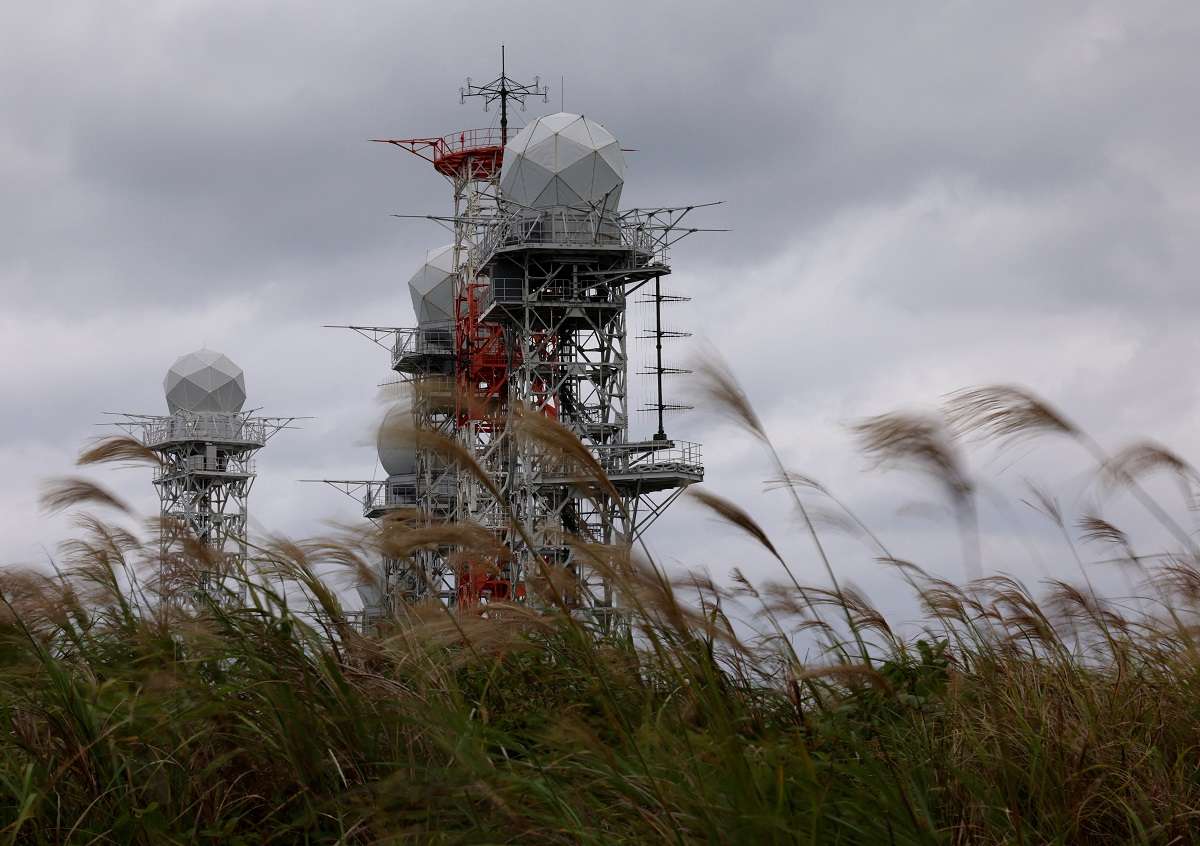
A view of a radar facility set up for coastal surveillance by Japan Ground Self-Defense Force’s Yonaguni base, on high ground on Yonaguni island, Japan’s westernmost inhabited island in Okinawa prefecture, Japan November 13, 2023.
NOT ENOUGH TO SHARE
Back in Yonaguni, resident Satoshi Nagahama, 33, was surprised to learn the government had no humanitarian plan for refugees.
“I don’t think we could handle any. The government would have to take them elsewhere,” he said at the island’s closest port to Taiwan, where he was hauling blue marlin from fishing boats and packing them in ice.
Even the community center that temporarily housed the Vietnamese refugees Sakihara found has been closed for a decade, its crumbling concrete walls draped in green netting.
Without government help, some residents say it would fall to the island’s two police officers or town hall officials including Koji Sugama, a 65-year-old former soldier, to handle any refugee crisis.
Since he was hired in April to improve disaster management, one of Sugama’s tasks has been procuring emergency supplies for residents, including bottled water and ready meals packed into three heavy steel containers dotted around the island.
“This will do for one, maybe two days,” he said, standing inside one of them. “There isn’t enough to share.”
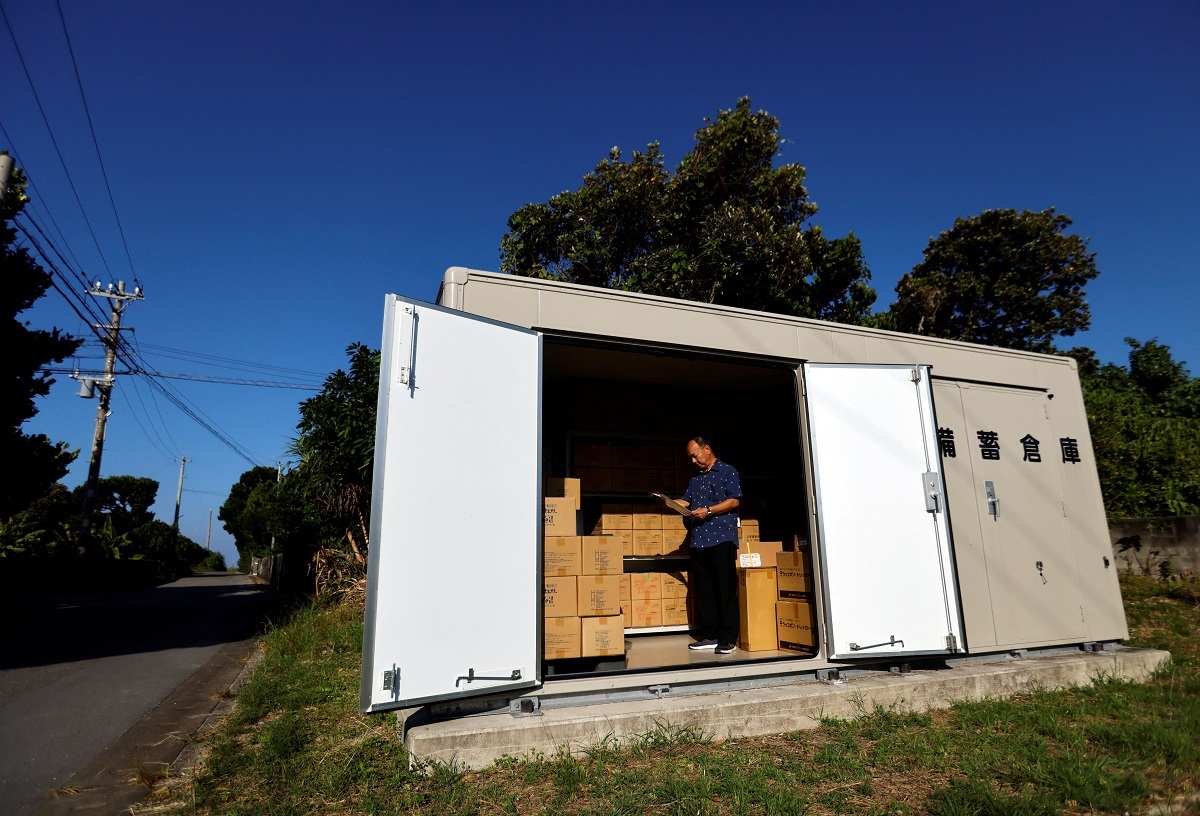
Koji Sugama, the Yonaguni town hall official in charge of preparing the island for disasters, checks stocks inside a heavy steel container filled with bottled water and ready meals for emergencies on Yonaguni island, Japan’s westernmost inhabited island in Okinawa prefecture, Japan November 9, 2023.
"News Services" POPULAR ARTICLE
-

American Playwright Jeremy O. Harris Arrested in Japan on Alleged Drug Smuggling
-

Japan’s Nikkei Stock Average as JGB Yields, Yen Rise on Rate-Hike Bets
-

Japan’s Nikkei Stock Average Licks Wounds after Selloff Sparked by BOJ Hike Bets (UPDATE 1)
-

Japanese Bond Yields Zoom, Stocks Slide as Rate Hike Looms
-

Japan’s Nikkei Stock Average Buoyed by Stable Yen; SoftBank’s Slide Caps Gains (UPDATE 1)
JN ACCESS RANKING
-

Keidanren Chairman Yoshinobu Tsutsui Visits Kashiwazaki-Kariwa Nuclear Power Plant; Inspects New Emergency Safety System
-

Imports of Rare Earths from China Facing Delays, May Be Caused by Deterioration of Japan-China Relations
-

University of Tokyo Professor Discusses Japanese Economic Security in Interview Ahead of Forum
-

Japan Pulls out of Vietnam Nuclear Project, Complicating Hanoi’s Power Plans
-

Govt Aims to Expand NISA Program Lineup, Abolish Age Restriction


